Unwrap the Magic: Exploring Italy's Enchanting Christmas Traditions
Step into a world of enchantment this Christmas as we unwrap the magic of Italy's captivating holiday traditions. From the charming streets of Rome to the snow-covered peaks of the Dolomites, Italy is a country that truly comes alive during the festive season. Immerse yourself in the warmth and joy of Italian Christmas celebrations as we delve into the customs and rituals that make this time of year so special. Discover the timeless beauty of the nativity scenes that adorn every corner, the mouthwatering delicacies that grace the tables, and the lively festivals that fill the air with merriment. Join us on a journey through the centuries-old traditions that have been passed down through generations, and experience the true essence of Christmas in Italy. Whether you're a seasoned traveler or an armchair explorer, prepare to be captivated by the magic and wonder that awaits. Get ready to unwrap the secrets and embrace the spirit of Italy's enchanting Christmas traditions.
The History of Christmas in Italy
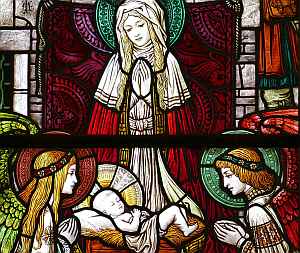
Italy has a rich history of Christmas traditions that dates back centuries. The celebration of Christmas in Italy can be traced back to the time of the Roman Empire when the festival of Saturnalia was held in honor of the god Saturn. This festival, which took place in late December, was a time of feasting, gift-giving, and merry-making. Over time, as Christianity spread throughout the country, the pagan customs of Saturnalia were blended with Christian beliefs, giving rise to the unique Christmas traditions that we see in Italy today.
One of the most iconic symbols of Christmas in Italy is the nativity scene, or "presepe" in Italian. The tradition of setting up nativity scenes can be traced back to the 13th century when St. Francis of Assisi created the first live nativity scene in the town of Greccio. Today, nativity scenes can be found in churches, homes, and public squares all across Italy, each one meticulously crafted and adorned with intricate details. These nativity scenes not only depict the birth of Jesus but also include various characters and scenes from Italian village life, adding a touch of authenticity and charm.
In addition to nativity scenes, another important Christmas tradition in Italy is the lighting of the Yule log, known as the "ceppo" or "trunk." This tradition has its roots in ancient pagan rituals and symbolizes the light of Christ coming into the world. The Yule log is traditionally burned on Christmas Eve and is believed to bring good luck and prosperity for the coming year. The ashes from the Yule log are often kept and used in various rituals throughout the year.
Preparing for the Christmas Season in Italy
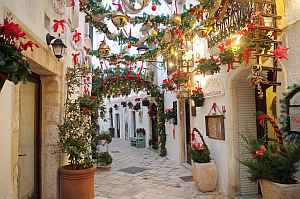
Image by lavaligiainviaggio from Pixabay
As the Christmas season approaches, Italians begin to prepare for the festivities with great enthusiasm. One of the first signs that Christmas is on its way is the appearance of the Christmas markets, or "mercatini di Natale," which can be found in cities and towns all over Italy. These markets are a feast for the senses, with vendors selling an array of traditional crafts, handmade gifts, and delicious food. The air is filled with the aroma of roasted chestnuts, mulled wine, and freshly baked treats, creating a warm and inviting atmosphere.
Another important aspect of preparing for Christmas in Italy is the decoration of homes and streets. Italians take great pride in creating a festive ambiance, with lights, garlands, and ornaments adorning every corner. In many towns and cities, elaborate light displays are set up, transforming the streets into a magical wonderland. Each year, there is a friendly competition between neighborhoods to see who can create the most impressive display, with bragging rights going to the winner.
Italian families also take the time to decorate their homes, with the centerpiece being the Christmas tree. While the tradition of having a Christmas tree is relatively new in Italy, it has become increasingly popular in recent years. Families gather together to decorate the tree with colorful baubles, twinkling lights, and handmade ornaments. The tree is often placed in the living room, where families come together to exchange gifts and celebrate the joy of the season.
Italian Christmas Decorations and Symbolism
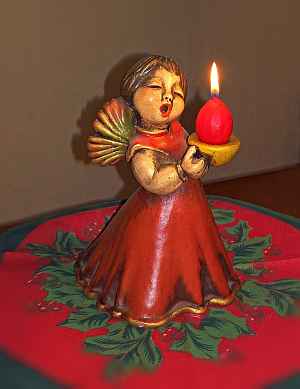
Italian Christmas decorations are steeped in symbolism and reflect the deep-rooted religious traditions of the country. One of the most important symbols of Christmas in Italy is the star, which represents the star of Bethlehem that guided the wise men to the stable where Jesus was born. Stars can be seen adorning the tops of Christmas trees, hanging in windows, and illuminating the streets.
Another significant decoration is the poinsettia, or "stella di Natale" in Italian. This vibrant red flower is believed to represent the blood of Christ and is often used to decorate nativity scenes, churches, and homes. Its striking beauty adds a touch of elegance and color to the Christmas festivities.
Candles are also an important part of Italian Christmas decorations, symbolizing the light of Christ. Candlelit processions can be seen in many towns and cities, creating a magical atmosphere as people gather together to sing carols and celebrate the birth of Jesus. The flickering glow of the candles adds a sense of warmth and serenity to the celebrations.
Traditional Italian Christmas Foods and Recipes
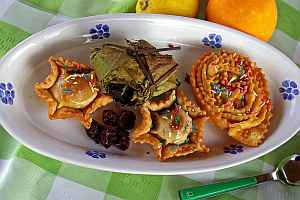
No Italian Christmas celebration would be complete without a feast of delicious food. Italians take great pride in their culinary traditions, and Christmas is a time when families come together to prepare and enjoy special dishes that have been passed down through generations.
One of the most iconic Italian Christmas dishes is "panettone," a sweet bread filled with candied fruits and raisins. Legend has it that panettone was created by a Milanese baker in the 15th century, who was inspired by his love for a young noblewoman. The bread became a symbol of love and good luck, and it quickly spread throughout Italy, becoming a staple of Christmas celebrations. Today, panettone can be found in every Italian household during the holiday season, and it is often given as a gift to friends and family.
Another popular Christmas treat is "pandoro," a golden, star-shaped cake that originated in Verona. Pandoro is similar to panettone but does not contain any fruit or raisins. Instead, it is dusted with powdered sugar and has a light, buttery flavor. It is often served with a dollop of mascarpone cream and enjoyed with a glass of sparkling wine.
Christmas Markets in Italy
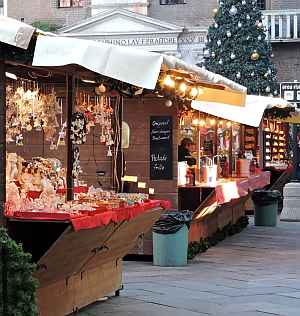
Christmas markets are an integral part of the Italian holiday experience. These markets, known as "mercatini di Natale," are a beloved tradition that dates back centuries. They offer a unique opportunity to immerse yourself in the festive spirit and indulge in a wide range of traditional foods, crafts, and gifts.
One of the most famous Christmas markets in Italy is the Mercatino di Natale in Bolzano, located in the heart of the Dolomites. This market is known for its charming atmosphere and picturesque setting, with the snow-covered mountains providing a stunning backdrop. Visitors can browse through wooden stalls selling handmade crafts, local delicacies, and traditional Christmas ornaments. The aroma of roasted chestnuts and mulled wine fills the air, creating a warm and inviting ambiance.
In Florence, the Piazza Santa Croce is transformed into a winter wonderland during the Christmas season. The market here offers a wide range of artisanal products, including ceramics, jewelry, leather goods, and Christmas decorations. Visitors can also sample traditional Tuscan delicacies such as panforte, a rich fruitcake made with honey, nuts, and spices.
For a truly magical experience, head to the Christmas market in Trento, located in the Trentino-Alto Adige region. This market is famous for its beautiful nativity scenes, which are displayed in wooden huts adorned with twinkling lights. Visitors can also enjoy ice skating, live music performances, and horse-drawn carriage rides, making it a perfect destination for the whole family.
Christmas Traditions in Different Regions of Italy
Italy is a country of diverse cultures and traditions, and Christmas is no exception. Each region has its own unique customs and rituals that add to the richness and variety of Italian Christmas celebrations.
In Sicily, for example, the Feast of Santa Lucia is celebrated on December 13th. This day marks the beginning of the Christmas season, and it is traditional to eat "cuccìa," a dish made with boiled wheat berries, ricotta cheese, and sugar. It is believed that eating cuccìa on Santa Lucia's day brings good luck and prosperity for the coming year.
In Northern Italy, especially in the region of Lombardy, the Feast of Saint Stephen is celebrated on December 26th. This day is known as "Santo Stefano" in Italian, and it is a time for families to come together and enjoy a leisurely meal. One of the most popular dishes served on this day is "risotto alla Milanese," a creamy rice dish flavored with saffron. The vibrant yellow color of the risotto is said to represent the golden halo of Saint Stephen.
In the region of Friuli-Venezia Giulia, the arrival of the "Befana" on January 6th is eagerly anticipated by children and adults alike. The Befana is a mythical character who is said to bring gifts to children on the eve of the Epiphany. According to legend, the Befana was an old woman who was visited by the three wise men on their way to Bethlehem. They asked her for directions, but she was too busy with her housework to accompany them. Later, she regretted her decision and set out to find the baby Jesus, but she was unable to locate him. Since then, she has been searching for him every year, leaving gifts for children in the hope that one of them might be the baby Jesus. On the eve of the Epiphany, children hang up their stockings, and the Befana fills them with sweets and small toys.
Italian Christmas Music and Carols

Music plays a central role in Italian Christmas celebrations, with carols and hymns filling the air and creating a festive atmosphere. From soaring operatic performances to joyful choral renditions, there is a wide range of music that captures the spirit of the season.
One of the most well-known Italian Christmas carols is "Tu scendi dalle stelle" (You Come Down from the Stars), written by Saint Alphonsus Liguori in the 18th century. This hymn tells the story of the birth of Jesus and the joy that his arrival brings. It is often sung during nativity scenes and midnight Masses, and its beautiful melody and heartfelt lyrics have made it a beloved Christmas classic.
Another popular carol is "Gesù Bambino" (Baby Jesus), composed by Pietro Yon in the early 20th century. This song, with its gentle melody and evocative lyrics, captures the innocence and wonder of the Christmas story. It is often performed by choirs and soloists, and its haunting beauty never fails to captivate audiences.
In addition to traditional carols, Italian Christmas music also includes festive songs that celebrate the joy and merriment of the season. One such song is "Babbo Natale" (Santa Claus) by Edoardo Bennato, a lively and upbeat tune that gets everyone in the holiday spirit. Another popular song is "Happy Xmas (War Is Over)" by John Lennon and Yoko Ono, which has become an anthem for peace and goodwill during the Christmas season.
Celebrating Christmas Eve in Italy
Christmas Eve, or "La Vigilia di Natale" in Italian, is a time of anticipation and reflection. It is a night filled with family gatherings, religious ceremonies, and delicious feasts that set the stage for the joyous celebrations of Christmas Day.
One of the most cherished traditions of Christmas Eve in Italy is the "Cenone," a lavish dinner that typically consists of multiple courses. The menu varies from region to region, but some common dishes include seafood, pasta, roasted meats, and a variety of desserts. In many parts of Italy, it is traditional to abstain from eating meat on Christmas Eve as a form of fasting and penance, so seafood dishes take center stage. Families gather around the table, sharing stories and laughter as they savor the flavors of the season.
After the Cenone, many Italians attend Midnight Mass, or "La Messa di Mezzanotte," to celebrate the birth of Jesus. Churches are beautifully decorated with candles, flowers, and nativity scenes, creating a serene and reverent atmosphere. The Mass is a time for reflection and prayer, as well as a chance to come together as a community and share in the joy of the season.
Christmas Day and Beyond in Italy
On Christmas Day, Italians continue the celebrations with family gatherings and festive meals. It is a day for relaxation, indulgence, and spending quality time with loved ones.
In many parts of Italy, the day begins with a leisurely breakfast that includes traditional Christmas treats such as panettone and pandoro. Families exchange gifts and enjoy the company of one another, creating lasting memories and strengthening bonds.
In some regions, such as Sicily and Naples, it is traditional to attend a "Presepe Vivente" (Living Nativity) on Christmas Day. These live nativity scenes reenact the birth of Jesus, with actors dressed in period costumes and animals playing a part in the tableau. It is a unique and immersive experience that brings the Christmas story to life and reminds people of the true meaning of the season.
As the Christmas season draws to a close, Italians bid farewell to the festivities with the celebration of the Epiphany, or "La Befana." On January 6th, children wake up to find stockings filled with gifts and sweets, left behind by the Befana. It is a bittersweet moment, as it marks the end of the holiday season and the return to everyday life. However, the memories and traditions of Christmas in Italy continue to live on, bringing joy and warmth to the hearts of all who experience them.
Conclusion and Final Thoughts
Italy's enchanting Christmas traditions are a testament to the country's rich cultural heritage and deep-rooted religious beliefs. From the nativity scenes that grace every corner to the mouthwatering delicacies that delight the taste buds, Christmas in Italy is a time of joy, celebration, and reflection.
As we have explored the history, customs, and rituals that make Italian Christmas celebrations so unique, we have witnessed the magic and wonder that permeate every aspect of this special season.
